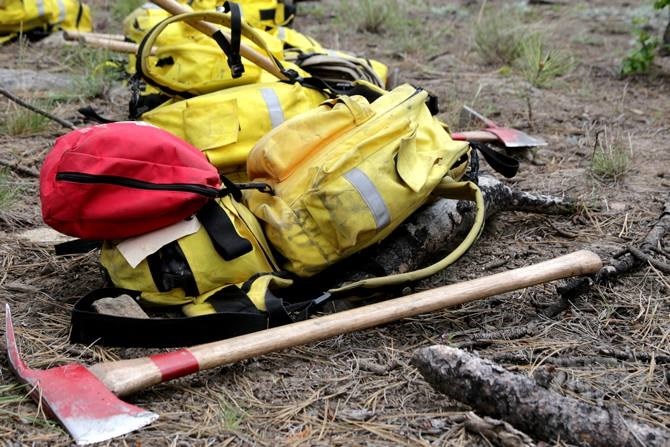
Image Credit: FILE PHOTO
September 10, 2019 - 3:30 PM
VERNON - As the warm weather gives way to cooler fall temperatures, many of the spot-sized fires in the Kamloops Fire Centre have been doused.
While conditions can change quickly, fire information officer Taylor MacDonald said that it’s unlikely that there will be much activity in the coming weeks.
“Quite a few of them (Thompson-Okanagan wildfires) have been called out or are classified as under control. We’ve had a lot of precipitation that will definitely help crews with suppression,” MacDonald said. “We’re not really seeing much action throughout the heat of the day."
The BC Wildfire Service shows 14 active fires in the Thompson-Okanagan region, many of which are spot-sized.
While numbers are subject to change, current statistics show that 21,138 hectares have burned from a total of 781 fires, 192 of which were recorded in the Kamloops Fire Centre. According to the BC Wildfire Service, the last year with similar statistics was 2013, which saw 18,298 hectares burned from 1,861 wildfires.
Preliminary estimates for the 2018 fire season show 1,354,284 hectares burned by 2,117 fires, up from 1,216,053 hectares and 1,353 fires in 2017.
Despite predictions calling for a long and devastating fire season, the numbers to date tell a different story. In the past 10 years, not including the 2018 fire season, there was an average of 1,666 wildfires and 269,702 hectares burned.
“While it has been warm and on the drier side of normal, there has been enough rain and temperatures haven’t been persistently hot, especially in July, so the wildfire season hasn’t been as bad as expected,” said Weather Network meteorologist Doug Gillham in an Aug. 30 interview with iNFOnews.ca.
BC Wildfire Service statistics suggest 70 per cent of wildfires in 2018 were lightning-caused compared to an average of 57 per cent. Statistics for 2019 are not yet available, but MacDonald said that weather plays a substantial role in wildfire activity.
Gillham agreed.
“The numbers show a warm, dry summer but the peak of summer wasn’t… it was actually below seasonal at that point. The season had no extremes in heat, and just enough showers to keep things moist,” said Gillham. “Although there were many days that were a degree or two above normal, there were no extended periods in the upper 30s. We just didn’t get the run of hot, dry days that can be so problematic for wildfires."
According to Environment Canada, there is a risk of a thunderstorm late Tuesday, Sept. 10. Rain is in the forecast for the remainder of the week, save for Thursday, which will see a high of 22 C and cloudy skies.
– With files from Steve Arstad.
READ MORE
To contact a reporter for this story, email Parker Crook or call (250) 864-7494 or email the editor. You can also submit photos, videos or news tips to the newsroom and be entered to win a monthly prize draw.
We welcome your comments and opinions on our stories but play nice. We won't censor or delete comments unless they contain off-topic statements or links, unnecessary vulgarity, false facts, spam or obviously fake profiles. If you have any concerns about what you see in comments, email the editor in the link above.
News from © iNFOnews, 2019